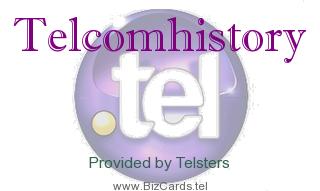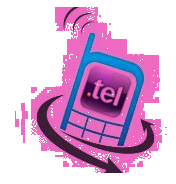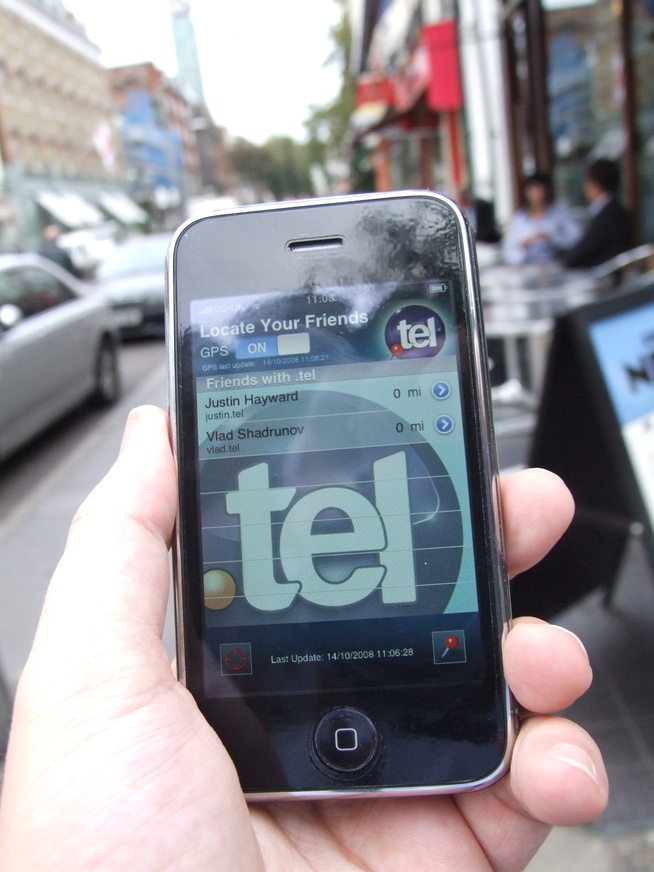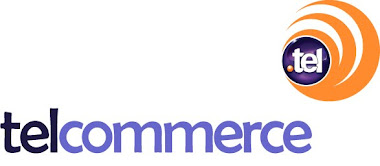Probably the most interesting thing, about domain extensions, are the activities of the supporting communities of the domain extensions.
It basically does not matter, how your domain extension looks like, for it to be successful:
What depends and matters, is how it is promoted.
Follow the history of .com, and you will understand, how and why it got strong and popular.
You can follow the history of promotion and forum-support of any domain extension, and you might be able to discover parallels of smart endeavours, time (-line) and success. (Only love, provided by a fan community, is not enough, to make a domain extension succesfull. See .mobi, for example. It is viable, respectively still alive, because of the love it gets, but to be able to be sucessful, it will need some more support, by the powerful companies, that are supposed to be backing it up. And so, same with .tel...)
Basically, it is always common sense, that saves you, a project, or anything in progress that happen to be in a awkward situation.
What counts, are costly and smart pomoting, time and common sense, that must always be used.
The non usage of common sense and brains, it the death to anything.
The non usage of money, won't help promote, because promoting costs.
The cultivation of plein stupidity may be bad, in times, may be good in other times, because people are sometimes stupid, and trained by media and advertising, not to think, but only to consume, what is offered. The language of stupidity is a language, mankind has learned over the years, and understands. Whatever way you are able to make your self understood: You can earn money, if people understand, what you are selling.
The mixture, of intelligence, stupidity, sex, common sense, etc., is what sells.
Try to sell a perfect and usefull product, only by explaining how it functions, and for it is good: Consumers are not used, only to get dry facts served. They are spoiled, and used to get a daily dosis of adverts, that contain sex, crazyness, stunning effects, etc., and where they do not have to think, but only consume.
And now, here you are with the dot tel domain, in our world today: How are you going to sell it?
The „Love Train“ was popular, because it is funny and sexy, and only explained a minimum of the technology, idea, and features about .tel.
If you will, the „Love Train“ is a promotion video for dummies, that just want a good lough, and some sexual stimulation. Well, the „Love Train“ did the trick, and worked for a short while, and only for a few.
But who are the consumers of .tel?...: All sorts of people and groups. Speak to them (and about their needs and dreams) individually. Make ten completly different videos, addressed to ten different groups of consumers...
.
Anyway:
Here is the code for implementing the (premium qualitiy version of the) video within your blog (however, it is still a stunner and a eye catcher, and nevertheless, a lot of fun):
(Just copy and paste...):
.
.
Wednesday 30 December 2009
Tuesday 15 December 2009
Is there a confusion?

If you would compare what the registry of the dot tel domain has done for its domain and community within the first year, and what other registries have done in their first year since the launch of their domain extension, than you might be able to conclude and see, that this is simply outstanding and extraordinary. And no other registry and community has made so much effort before, to develope and market its domain within the first year since launch.
I guess that marketing of a mobile domain, has to be done in a similar way a for example as it was done for the iPhone.
.Tel should look upon dot mobi (.mobi), as its brother, because, as far as I know, it is the only other mobile domain that exists. If you will, it is also early days for dot mobi. Wheras dot mobi offers nothing else, than its domain extension „.mobi“ (but which might be very fine, too), the dot tel domain does not only offer its domain extension „.tel“, but also a practical and useful interface, where you not need to have a website, or any hosting, which means, also, that you save money on webspace and the cost for hosting.
We got to learn from our "brother" (.mobi), about the good and the bad, about the pros and cons.
Despite all the negaive talk and the naysayers: Dot mobi is still there, alive, has a demand for it, and gets sometimes some very nice prices at auctions.
Furthermore: Same as with .tel, there are a lot of people who don't get, what .mobi is about, and why a registry had lauched it, and why it has a lot of companies that are backening it financially.
For many things, .mobi won't be able to be of much use, but in some other situations, it is the perfect solution.
Neither .mobi, nor .tel is probably the „one size fits all solution“. But it might fit, for you, or for him, or her. Just tell them about it, and why it might fit and suit them.
Personally, it think, you either have a love affaire with a name or/and extension, or you don't:
Some names with „.com“, or with „.mobi“ just look darn good. I am not sure, about if a name looks better, if it has „.tel“ instead of a country extension, etc., but it sure will feel darn good.
So that is where .tel will have to be good at: At providing a great feeling and experience.
As we all know: „.com“ stand for „commerce“, and „.mobi“ stands for „mobile device, or mobil phone“. But „.tel“?...: Can you go to your telephone, and use „.tel“? However, „.tel“ means „telecommunications“. But if there would be a person having no clue about the meaning of „.com“ he could think as well, that „.com“ meant „telecommunications“. Why not? Or should it be more like „.comm“ for „communications“? - Commerce, as well as communications start both with "com", and "com" could therefore also stand for (tele)communications, if it had not been promoted for the cause of (e-)commerce.
Anyway: „.tel“ might confuse some people with its extension, because they might not be able to figure out, for what „.tel“ is supposed to stand for.
It might be easier for them, if they get a chance to look at a .tel page.
You could even go so far, and say: Well, if you wan't to put it right, according to common sense, than „.mobi“ should look like the dot tel domain. Because „mobi“ stands for mobile and telecommunication.
Imagine, if „.tel“ had only its extension to offer, like „.mobi“...: People would have to develope a mobile version of their website, and change their „.com“ extension for a „.tel“ extension.
This might have even worked better than with the extension „.mobi“ (if .mobi was .tel, and .tel was .mobi).
- If the extension ".mobi" hadn't been already taken by a other registry, would of possibly Telnic chosen that extension for its interface, that was designed mainly for mobile purpose? Would that of made more sense, having the mobile and electronic business card named "company.mobi", instead of "company.tel"?
However, I think it is just important, that users know, for what „.mobi“ and „.tel“ stand for, and how they can be used in the most efficient way. So that it will then be up to them, to decide, if they could benefit from such a extension/domain, or not.
As we concluded: „.com“ or „.tel“ could quasi stand for anything (communications or telefon, etc.).
The strength of the „.mobi“ name might just be, that people are most likely to easily figure out, that the domain name with such a extension is for mobile devices. Maybe even soon, for smartbooks (smaller mini laptops, that are smaller than netbooks).
Why is „.tel“ not better named ".tele", or „.teleco“, or „.telecom“ (dot tele, or dot teleco, or dot telecom)? - Would there be less confusion? Is „.tel“ confusing?
„.Tel“ probably will mean nothing to the user, until he gets his hands on .tel, and realizes, how awsome this „.tel“ is.
With the registries themselfs, it is also a case fo "first com, first serve" (served by ICANN), because the extension ".com", as well as ".mobi" would of been perfect for the electronic business card that Telnic had launched a year ago. However, as soon as a extension is properly branded and marketed, it will work, no matter, if the extension makes sense, or not, for its cause and usage (see the dot com domain, after a period of twenty five years). Because ".com" could mean this, or that, or also that. Who thinks, every time he uses a ".com" that it means "commerce"? - The only thing they know, is that they can do business with that domain, and that it is not a non-profit website, like you can find under a domain name with the extension ".info", ".museum", etc.
.
So, what is the message?:
We got to get people to know, for what the domain name extension ".tel" stands for, and they might want to take a look at it. Otherwhise they might say: "Why bother and do "try and error", and possible waste some time? After all: Isn't it ".mobi", that is for mobile phones? Is there something else, as well?" - Tell the world...
.
But seriously, folks: The DotMobi registry and Telnic better make some sort of a deal..., becaus the one registry has the name, and the other one has great functions and features, and will have the looks (very soon).
It is not the first time, that two important companies have merged together, to be more successful, in hard economic times, and in a market with a lot of competition, etc. - All those mobile phone users, and the potential ones to come: We don't want to confuse them, but we want to give them something, that they can use, and that is easy to get and to use.
Merry Christmas!
Wednesday 9 December 2009
Wednesday 30 September 2009
Saturday 5 September 2009
The present, and the future are myname.tel and mycompany.tel.
.

The first telephone numbers weren't numbers, they were names. The name of your company or you as an individual. That was too confusing to build a telephone system on since many people in a town might share the same name. Starting in 1879, then, scarcely three years after the telephone was invented, the switch to assigning a customer a number began, with a four digit code being typical. Calls were not dialed by the customer, indeed, there were no dial telephones yet. All calls were connected manually by an operator at a switchboard. But dial telephones would come along.
AT&T's operating companies started installing dial telephones in the mid to late 1920s. Customers could now dial numbers themselves, instead of having an operator place them as before. Rather than use all digits to indicate a telephone number, AT&T hit upon a hybrid system of letters and numbers. Instead of a number like 351-1017, the Bell System referred to it by a name like ELgin 1-1017, ELliot 1-1017, or ELmwood 1-1017. Something like that. The two letters and a number indicated a customer's switching office or exchange, the last four digits the actual customer's number. But why use letters?
The Bell System thought abbreviations would prevent misdialing, a mnemonic device to help callers unaccustomed to using dial telephones. AT&T's William G. Blauvelt designed a dial with the letters and numbers we use today, one without a Q or Z, one without letters for the digits 1 and 0. The assumption was, therefore, that customers could dial four or five numbers correctly but not six or seven. And that somehow they needed letters as well.
I've never understood, though, why PEnsylvania 6-5000 should be easier to remember or dial than 436-5000.
Source:
Link:
http://www.privateline.com/mt_telecomhistory/
Wireless Telephony
The Technical World, March, 1905, page 71:

ELSEWHERE in this issue will be found a description of the various wireless telephone systems which have been proposed, together with a brief history of the general subject, by A. Frederick Collins. The first suggestion of a wireless system was by A. G. Bell in 1880. Professor Bell conceived the idea--after the discovery of the variation in resistance of the selenium cell according to the variation in light thrown upon it--that this principle might be used to reproduce spoken words, and such proved to be the case. The speaking arc is another very interesting experiment described; but, as both of these methods depend upon an uninterrupted visual line and more or less accurate alignment of apparatus, it is hardly possible that they can attain much practical importance or be operated over very great distances. In a recent article Mr. Tesla states that "within a few years a simple and inexpensive device, readily carried about, will enable one to receive on land or sea the principal news, to hear a speech, a lecture, a song, or play of a musical instrument conveyed from any other region of the globe." Aside, however, from this prophecy, wireless telephony offers an interesting field for research and experiment, although after 25 years much still remains to be done to place it on a sound commercial footing.
Link:
http://earlyradiohistory.us/1905col.htm

ELSEWHERE in this issue will be found a description of the various wireless telephone systems which have been proposed, together with a brief history of the general subject, by A. Frederick Collins. The first suggestion of a wireless system was by A. G. Bell in 1880. Professor Bell conceived the idea--after the discovery of the variation in resistance of the selenium cell according to the variation in light thrown upon it--that this principle might be used to reproduce spoken words, and such proved to be the case. The speaking arc is another very interesting experiment described; but, as both of these methods depend upon an uninterrupted visual line and more or less accurate alignment of apparatus, it is hardly possible that they can attain much practical importance or be operated over very great distances. In a recent article Mr. Tesla states that "within a few years a simple and inexpensive device, readily carried about, will enable one to receive on land or sea the principal news, to hear a speech, a lecture, a song, or play of a musical instrument conveyed from any other region of the globe." Aside, however, from this prophecy, wireless telephony offers an interesting field for research and experiment, although after 25 years much still remains to be done to place it on a sound commercial footing.
Link:
http://earlyradiohistory.us/1905col.htm
US telephone companies
Wireless Telephony:
http://smart90.com/soulfind.com/frederickcollins.htm

Wireless Telephone Demonstration 1902.
Although the Bell System is the most well-known of US telephone companies, our industry began with hundreds of local companies all trying to deliver telephone services to their subscribers. In 2005, there are again hundreds of companies competing for our telecommunications business.
This area of the museum highlights the histories of those companies, large and small, historic and contemporary.
http://smart90.com/soulfind.com/frederickcollins.htm

Wireless Telephone Demonstration 1902.
Although the Bell System is the most well-known of US telephone companies, our industry began with hundreds of local companies all trying to deliver telephone services to their subscribers. In 2005, there are again hundreds of companies competing for our telecommunications business.
This area of the museum highlights the histories of those companies, large and small, historic and contemporary.
Subscribe to:
Posts (Atom)





















































